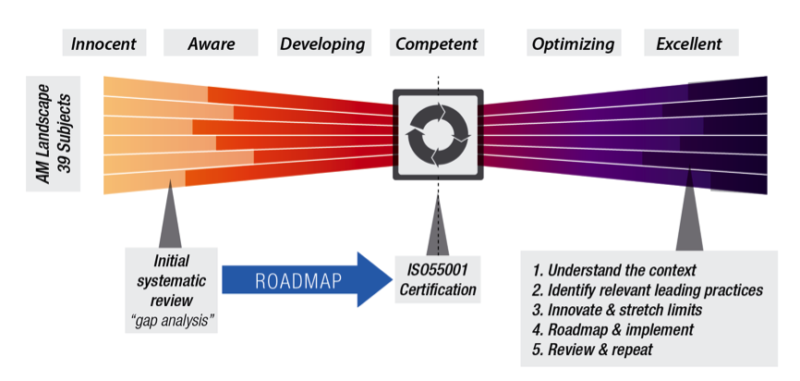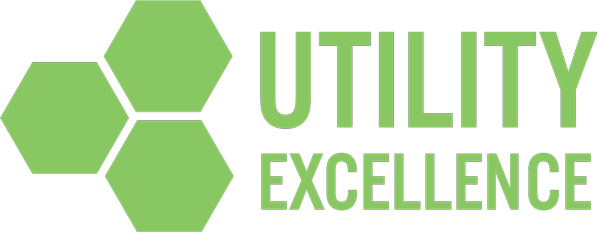What’s the current level of your enterprise asset management program? Are you in the beginning stages? Is your program pretty good but you need improvement? Or do you already have a world-class program?
Understanding where you are as an organisation is important as it will determine the right direction for your asset management improvements. If you are just starting out, there is no point trying to implement improvements as if you were a world class operation. And even if you already have a world-class maintenance program, there are still things you can focus on to get better.
Implementation of an updated Strategy will allow the Utility to define and maximise the value from its asset base through measureable and defensible investment decisions. The ultimate output of aligning strategic objectives to the Starategy will be an integrated EAM system that provides:
- clear linkages between stakeholder requirements and operational activities;
- defined asset strategy and planning protocols;
- frameworks for decision making and risk management;
- lifecycle delivery management (planning, acquisition, operation, maintenance and disposal);
- asset performance data collection and analysis; and
- organisational capability and people development.
In order to transition from the current state to the defined target state asset the utility will need to improve many of the elements of asset management throughout the company. The newly developed Strategy will need to be delivered by projects that provide an EAM framework, operating protocols, technology uplifts and an enterprise-wide aligned, engaged and competent workforce in the discipline of asset management
The establishment and implementation of Enterprise Asset Management including its associated systems, supporting procedures and development of organisational capability is a major endeavor. The challenge facing the utility, is to undertake this transformative work without compromising its ability to continue delivering its day-to day services to the community. For this reason, a carefully staged implementation program will be developed over a defined period (depending upon the pace of change required) aimed at focusing on known areas of high risk as a priority. The newly developed Asset Management Strategy can utilise the Institute of Asset Management’s Asset Management Maturity guide as the reference to represent the journey articulated below.

Here are some questions based on the most common three stages of maturity (aware, developing and competent) that will help you determine areas of focus for improvement:
Aware
If you’re starting out with the basics of asset management, you need to make sure you’re your database is solid and your foundation is set.
- Do you have a Computerised Maintenance Management System (CMMS)? e.g. an SAP, an Oracle, a program you’re using to write, close, and track work orders
- Is there an equipment naming convention?
- Is critical equipment defined and identified?
- Do standard work instructions exist?
- Are there PM Triggers for critical equipment?
- Is there a method to manage instrumentation?
- Is work planned and scheduled?
- Do you have a skills matrix?
- Does a system to manage spare parts exist?
If you are starting out as a maintenance organisation or you don’t have some of these basics, these are the areas you should be focusing on – start by measuring things that help improve these areas. Focus your attention on the People, Process and Technology uplift areas required to support the 39 GFMAM AM Landscape subject areas.
Once you have these in place, you can then start making things right and embedding this new way of working into the business. But if you don’t have this foundation, you’re not going to be able to achieve some of the other things you want to achieve.
Developing
If you’re in a developing mode here are the areas you should be focusing on:
- Is a Strategic Asset Management Plan developed?
- Is equipment history tracked and analysed?
- Are predictive methods/condition-based monitoring in place? e.g. infrared, vibration analysis, oil analysis, ultrasonic.
- Does a long-term plan exist? When you’re first starting out, you’re lucky to have work orders for the next day ready to go. In sustaining phase you should have a six-week plan or six-month plan that you can tweak as you go along.
- Is there an autonomous maintenance program? Note that if you’re in a union environment, sometimes this is harder
- Is an outsourcing analysis performed?
- Are costs analysed?
- Are parts and equipment standardised where possible
- Do we have an annual procurement plan aligned to the Program of Work Plan
Competent
If you’re competent, then you’re going to be able to be ISO55001 certified and are focusing on these critical things.
- Are Asset Management Plans in place for key asset systems and sub-systems?
- Is a Failure Modes and Effects Criticalaity Analysis (FMECA) process used?
- Are Root Cause Analyses conducted for specified events?
- Are Functional Block Diagrams in place for Critical Systems/Subsystems?
- Are Asset Objectives defined in alignment to the FBDs and RBDs and allocated against the Asset Management Plans
- Are Reliability Centered Maintenance principles in use?
Not all organisations are at the same level of maturity, and therefore should not be focusing on the same improvements. First figure out what stage you’re at, and then focus on the small improvements that will eventually get you to where you want to be.
To embed AM into the culture of the utility the following other elements are considered key enablers for success:
- leadership and culture;
- change management;
- alignment;
- performance management;
- competency development;
- asset management data and systems;
- supporting organisational processes and systems.
Structure these improvements as Targeted initiatives or projects to ensure they get the attention they deserve.

